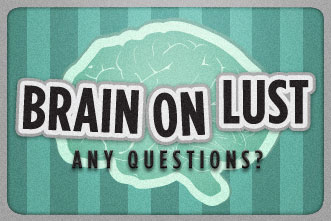Today I’m doing a little celebrating! Yesterday marked the last day of the last class of my doctoral coursework! Wahoo! Now, I still have at least a year and a half left of comprehensive exams and dissertation writing before I can reach the PhD, but the end of coursework is definitely a milestone. Plus, coursework is the most baby-incompatible part of my program, so it’s nice to have that out of the way as well.
My last class, the class I just concluded, was absolutely fascinating. I learned about how the brain works, particularly in regards to learning. What science is discovering about brain function has important implications for teachers and church leaders, and it helps us to better understand how God designed us.
I will probably write about my gleanings from that class multiple times in the future, but there is one tidbit I want to share with you today. It relates to how our brains are influenced and shaped by the things we see, the messages we hear, and the experiences we have.
(As a brief side note, I do not claim to be a scientist, or even good at understanding basic science, so if I describe something incorrectly feel free to offer correction in the comments section, but do so in layman’s terms so we can all track with you. Thanks!)
Now back to the brain. And I promise I’ll keep this technical stuff short.
Brain 101
So here’s a simple description of how the brain works:
Whenever you learn something new, your brain changes, both physically and chemically. As that new information is stored, your brain creates new neural pathways and strengthens old ones.
As an example of this neural process, think about a child who is learning about animals. He knows what a dog is because his family owns one, but one day he sees a cat. He points to the cat and says, “Dog.” He does this because his brain already has a category for furry, four-legged creatures. He is drawing on that neural pathway and strengthening its presence in his brain by recognizing the cat.
However, the child’s mom corrects him and says, “No honey, that is a cat.” In response, the child’s brain will develop a new neural pathway for this new category of furry, four-legged creature. And later on, when he learns there are different types of cats, he will strengthen his existing neural pathway for cats, but also create new ones as well.
What is especially interesting about neural pathways is they can be strengthened or weakened. The more you use certain neural pathways, the stronger they become, whereas others weaken with lack of use. Scientists believe this is how we forget things. It’s not that the information is no longer there, as if it falls out of our brains. Instead, the connections to that information have been so weakened by lack of use that we can no longer access it.
Why does this matter to you?
The brain is essentially plastic. It is constantly being molded by what you put into it. That is an exciting and encouraging aspect of the brain’s design—it means we can change and grow!—but as you can see from the above description of the child, our past experiences also inform our future ones. The neural pathways that already exist in the brain will direct how we process future experiences. Sure, we can form new neural pathways, but the existing neural pathways will be our go-to, at least at first.
In the same way a child who owns a dog may only have one category—dogs—for ALL furry, four-legged creatures, and mistakenly applies that category too generally, we can do the same. And I’m afraid we do.












